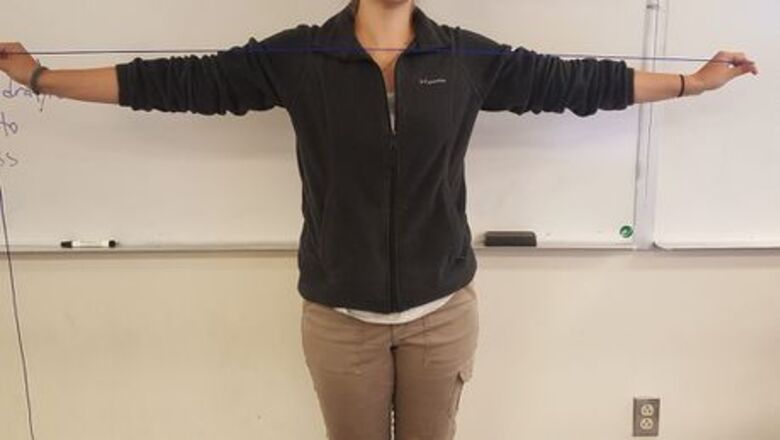
views
- All you need to make a cord rosary is twine and a pair of scissors.
- Start with a 20-foot length of twine.
- Use your fingers to tie loop knots along the twine to make the "beads" and cross of the rosary.
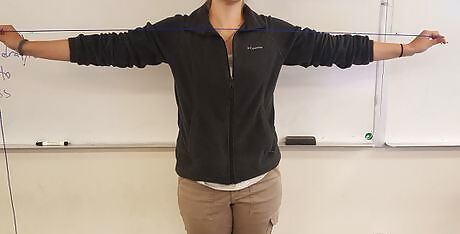
Prepare your string. Cut the twine into segments approximately 20 feet long. Use arm-span as a tool to estimate 20 feet. Unroll the roll of twine until it is the length of your arm span. (The arm span of a person of average height is approximately 5 feet.) Unroll the twine until it is the length of four arm spans. This will be approximately 20 feet.

Cut the twine and melt the ends using a lighter. Use scissors and cut the end of the twine at the length you previously measured. Do not burn yourself or get molten nylon on anything; it does not come out. Use the lighter to burn the cut ends of the twine. Do not let the ends of the twine fully catch on fire. If the ends catch on fire, quickly blow them out.
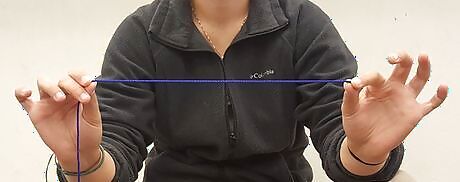
Create the body of the rosary. Lay the 20 foot piece of twine on the ground in front of you and find one end. Hold the end of the twine in your left hand Measure out approximately 1 foot of twine between your left and right hand. Hold your right hand at the other end of the foot of twine.
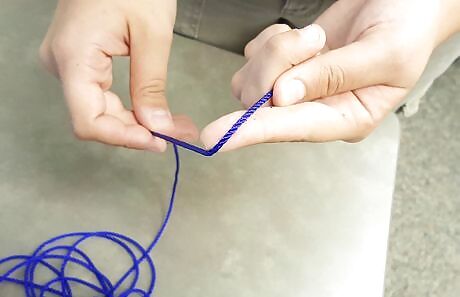
Start the knot. Hold out your left hand at the end of the one foot of twine away from the end. Drape the long end of the twine over your finger. (Give your pointer finger a sash.)
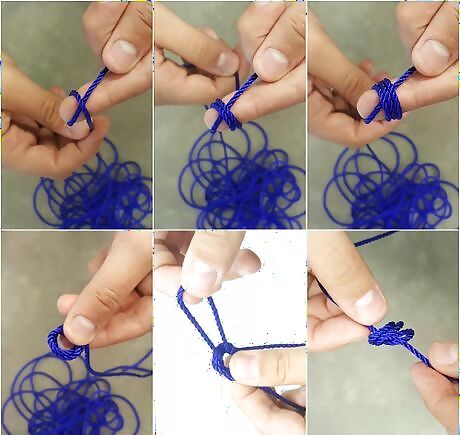
Tie a small, 3-loop knot. Do not wrap twine around your fingers tight enough to lose circulation. Wrap the twine around your pointer finger 3 times. The loops around your finger should be wrapped from the tip of your finger in towards your hand. Remove the loops from your pointer finger by sliding them off and gripping them between your pointer finger and your thumb. Take the remainder of the twine (~19ft) and poke it through the middle of the loops created by wrapping the twine around your finger. Pull the rest of the twine toward you. Using both hands maneuver the knot into the desired position. Tighten the knot slowly. Pulling the knot to the left of the working twine while you tighten it will cause the knot to settle more closely to the left and vice versa. Once your knot is in the position you want it, pull both ends of the twine evenly and tighten the knot.
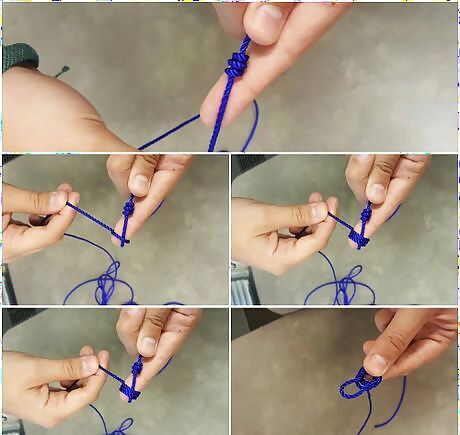
Tie a total of 10 small, 3-loop knots. Hold the previously tied knot in the crease of your pointer finger, and drape the twine over your pointer finger. Follow the knotting process again to tie another small, 3-loop knot about 3 centimeters away from the previous one. Repeat this process until you have created a total of 10 small, 3-loop knots.
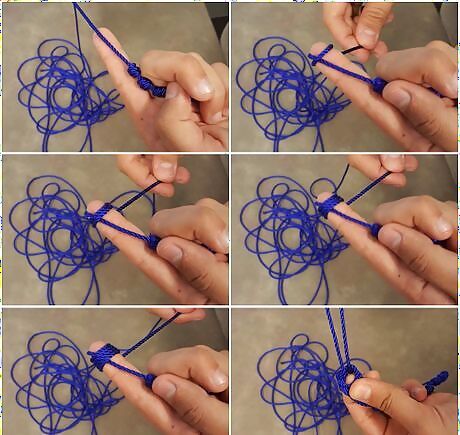
Tie a large, 4-loop knot. To make a larger knot, add a little more spacing. Drape the twine over your finger as you did before . Allow the last knot to rest on the second crease on your finger. Tie the knot the same way as you did before, except wrap the twine around your finger 4 times instead of 3. Only make this knot once.
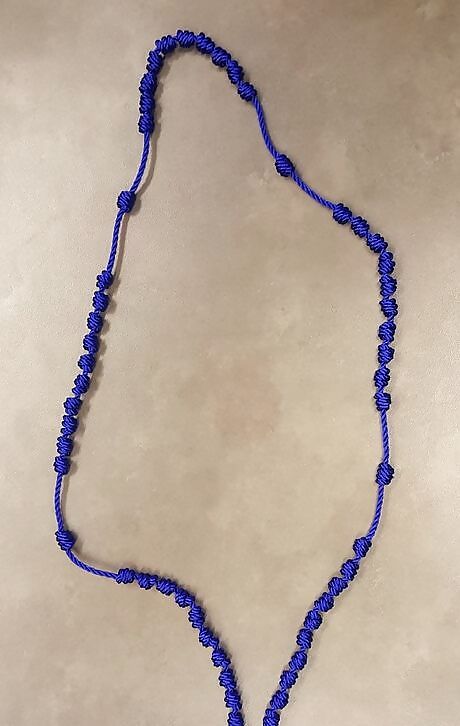
Tie more knots. Start with a larger space that measures about two knuckle lengths. Tie 10 more small (3-loop) knots, 1 big (4-loop) knot, 10 small knots, 1 big knot, 10 small knots, 1 big knot, 10 small knots.
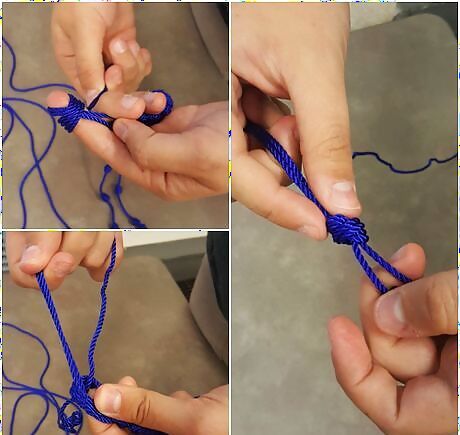
Tie the sides together. Using the end after the last small knot (~5ft) and the first knot (~1ft), hold them together and drape over your finger the same way you have made the rest of the knots. Wrap both strings around your finger together 2 times instead of the normal 3 and poke the ends of both of the strings through the resulting loop. The resulting knot is larger than the 4 loop knots.
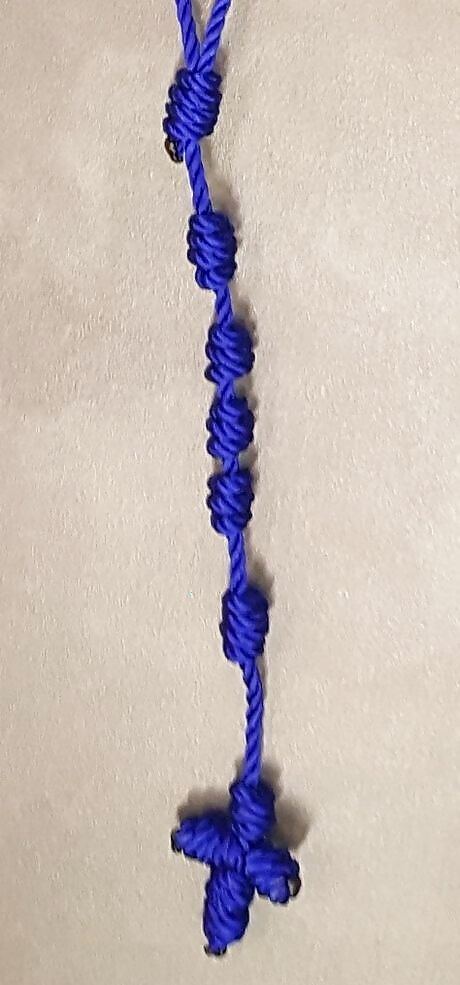
Tie a few more knots. Using the longer of the 2 remaining pieces, tie a pattern of knots as follows: 1 large, 4-loop knot 3 small, 3-loop knots 1 large, 4-loop knot 1 small, 3-loop knot (this will be the top of the cross) The image above shows the completed cross. Your current work should look like this figure minus the completed cross at the bottom.
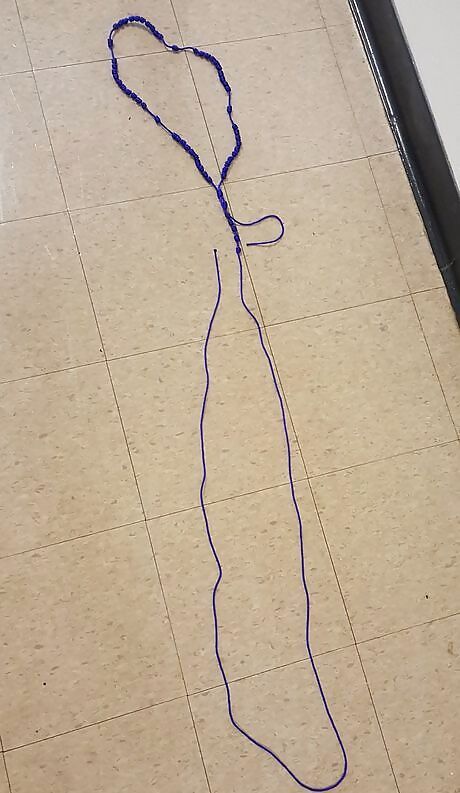
Prepare to make the cross. Take the remaining long piece of twine that is not knotted and fold it in half. The very end of the twine should be touching the last 3-loop bead. Cut the twine along the fold creating 1 detached untied piece of twine that is the same length of the remainder of the twine after the last knot. Lay the partially completed rosary on the ground.
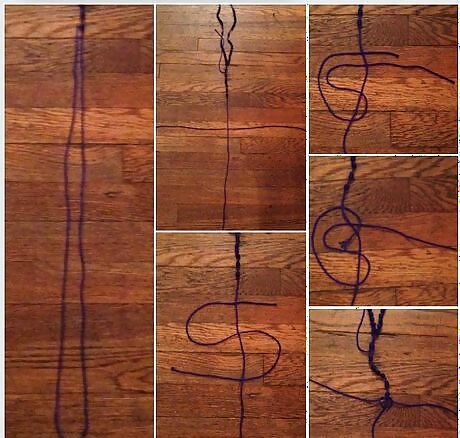
Make the connector knot. Pull the remaining long piece of untied twine straight out from the rest of the rosary. Lay the free piece horizontally over the pulled out piece approximately 3 inches below the last knot. Make the horizontal piece into an S shape by taking the left side and running the end under the pulled out piece connected to the last knot above where the twine is laying. Take the right side and run the end under the twine to make the bottom of the S-shape. Take the left exposed end of the twine and weave it over the piece of twine that is attached to the knots and through the loop created by the top of the S. Push this knot up right against the last 3-loop knot Tighten as much as possible.
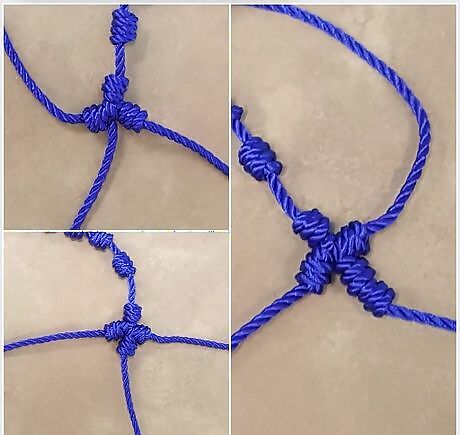
Finish the cross. Tie one 3-loop knot on either side of the S-loop knot. Push these knots as close to the center knot as possible. Tighten them as much as possible. Tie two 3-loop knots directly next to one another under the center S-loop knot of the cross. Your collection of knots should look like one above. If it does not, untie the most recent knots and try again. Make sure these knots are touching and are as tight as possible.
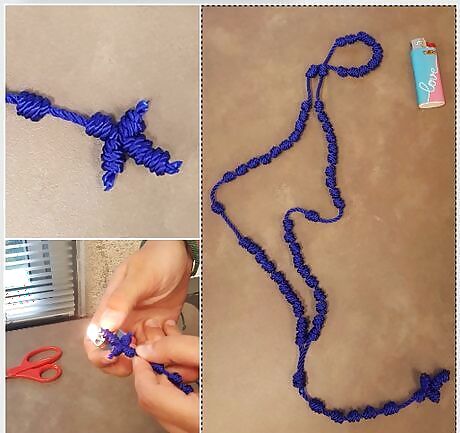
Finish the rosary. Cut the extra pieces of twine off the end of the knots (the ends of the cross and the large connector knot). Make sure to cut them as close to the knot as possible while still leaving a little bit of twine to melt. Do not burn yourself or get molten nylon on things, it does not come out. Carefully, use a lighter to melt the cut ends of the twine. It will smell strange and the ends will turn black, but this will prevent the rosary from unraveling. Blow on the melted portions to allow them to cool faster or dab them with a paper towel.
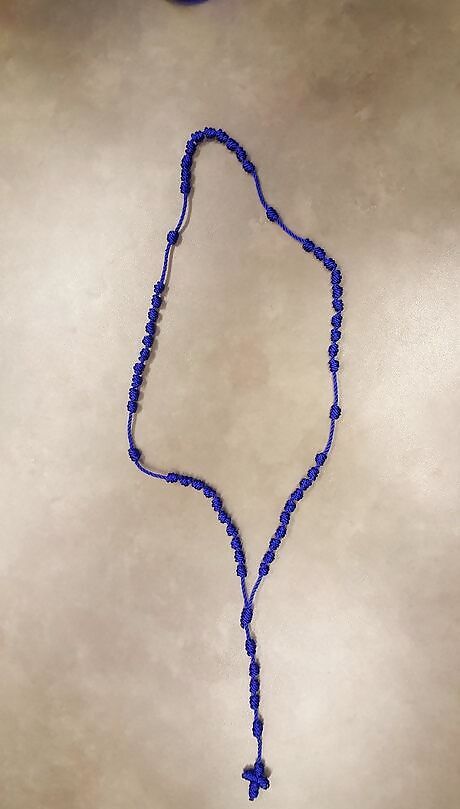
You now have a completed rosary!! Happy praying.




















Comments
0 comment